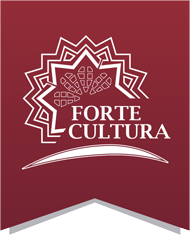If stones are not just walls and half-timbered houses more than beams, you will be enchanted by Büdingen's charm. The medieval old town, the imposing fortification wall with the historic Jerusalem Gate and Büdingen Castle, one of the best-preserved Staufer fortifications in Germany, impress visitors from near and far.
Monument and History
History Early Celtic settlement in the region is attested by burial mounds north of Büdingen. The original settlement of Büdingen developed as a Frankish foundation around the Remigius Church, the oldest sacred building in the Wetterau.
Quelle: Roentgen-Museum Neuwied, Stadtarchiv Büdingen Quelle: © C.Braunwarth Quelle: ©Thomas Appel Quelle: ©Verena Holland
Architecture Today's Büdingen Castle developed from a moated castle from the 12th century. To the west of the castle, a settlement developed which was later called the old town of Büdingen. In the middle of the 14th century, the settlement was secured by a town fortification consisting of a town wall, gate towers, ramparts and ditches. To the north of the old town, a new part of the town was created by immigration. Around 1390, this new town was also enclosed by a fortification. For both settlements, care was taken to ensure that the streets ran at right angles. There was an undeveloped area between the two parts. The political amalgamation to form the town of Büdingen took place in 1428 and from 1490 onwards a new, double-skinned ring of walls, more massive ramparts and a moat were built around the town as a common fortification for the old and new towns. The Seemenbach stream was also relocated to the south for this purpose. The front gate (Schlaghaus) became part of the outer ring of walls and the former stream bed became the Zwinger.
Quelle: © Christiane Braunwarth Quelle: © Verena Holland Quelle: ©t Büdinger Tourismus und Marketing GmbH Quelle: © Büdinger Tourismus und Marketing GmbH
Nature Experience The Garden Kölsch is a perennial garden, now open to the public, in the historic fortress farms of Büdingen's old town. This year-round flowering idyll invites you to relax next to the old town car park. There is direct access from the market square. Flyer Garten Kölsch Wilder Stein geotope is a side vent of the Vogelsberg in the middle of Büdingen above the historic old town. The Sand Rose Museum in the Jerusalem Gate and the Geological Sculpture Gallery provide information about the geological features of the region. Flyer Wilder Stein Sandstone Quarry Büdingen with its red sandstone already served as a source of material for Celtic inhabitants of the region.Sandsteinbruch Büdingen Wildpark in the Kälberbach Valley with the Forest Mammal Sculpture Trail and its wooden sculptures, puzzle boards, movement elements and sensory modules invites visitors to marvel and experience. The trail has information boards in Braille and leisure facilities such as a leo hut, game park, bubbling pool, forest adventure trail, forest stage and an adventure orchard. Wildpark Flyer TraumWald Erlebnispädagogischer Wald-Seilgarten und Team-Parcours „Laubfrosch“
Quelle: © V. Holland Quelle: © Verena Holland Quelle: © Verena Holland Quelle: © Vanesse Dippel




